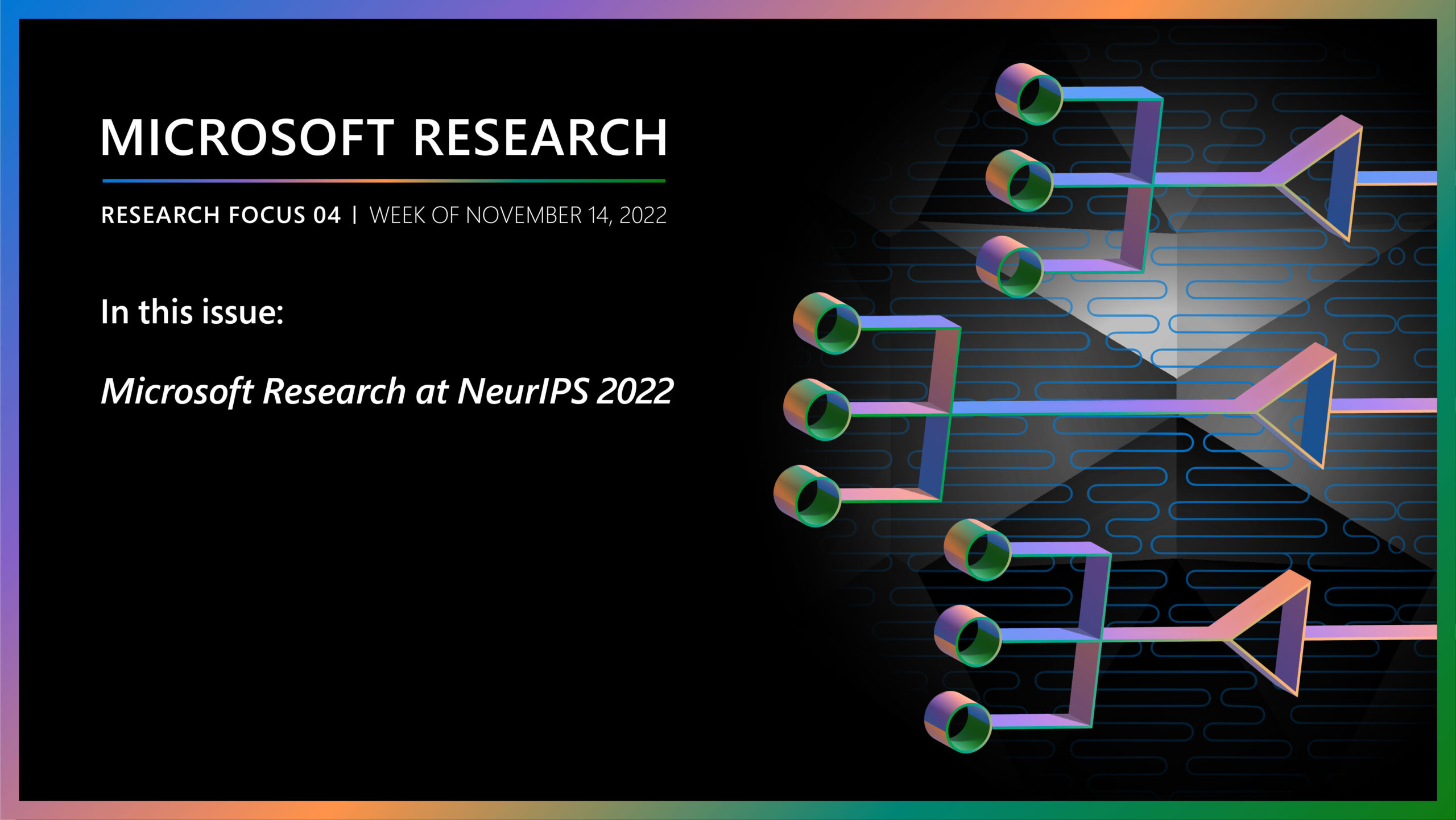By Rob Knies, Managing Editor, Microsoft Research
In an era of rising temperatures, shrinking ice caps, and widespread drought, the world’s attention is focused on environmental concerns. It seems like every business, every organization, every government has plans to “go green,” and information-technology firms are no exception.
No company, though, is better prepared to do so than Microsoft. Not only does it enjoy an abundance of software-engineering talent, but it also has a dedicated team of environmental scientists, the Computational Ecology and Environmental Science Group (CEES), based at Microsoft Research Cambridge (opens in new tab).
Spotlight: AI-POWERED EXPERIENCE
Microsoft is the only multinational corporation that has such scientists working alongside software developers. That puts it in a unique position to provide the assistance needed to harness the burgeoning collections of ecological data being generated by current scientific inquiry. Recognizing that, the International Union for Conservation of Nature (opens in new tab) (IUCN) has asked Microsoft to become the first and only corporate partner for its Red List of Threatened Species (opens in new tab), the most authoritative guide to the status of biological diversity.
That request was made public Sept. 11 during the IUCN World Conservation Congress (opens in new tab), a quadrennial gathering occurring in 2012 in Jeju, Korea, from Sept. 6 to 15. For Lucas Joppa (opens in new tab), a CEES scientist, the partnership makes perfect sense.

Lucas Joppa
“You would think the IUCN would be asking us to become a partner simply to create software,” he says, “and they are interested in our expertise as the world’s leading software developer. But the principal reason we were invited was because of the scientists that Microsoft employs and the research that they do. It is that combination that has led the IUCN to seek out our expertise and further the bonds between the two organizations.”
The IUCN is the world’s oldest, largest environmental organization and serves as the leading global authority on the environment. As such, it acts as a gatekeeper to a vast network of expert knowledge, which it combines into a data set that helps scientists understand the status of endangered species.
As shown by the ongoing debate about the realities of climate change, the providence and quality of environmental data is of paramount interest. To achieve effective scientific rigor, data must not only be accurate, but also widely available and accessible. That’s why the IUCN and its affiliated network, the Species Survival Commission (opens in new tab) (SSC), a collection of 9,000 volunteer experts who advise the IUCN on scientific issues, produce and disseminate the Red List of Threatened Species. Everything on Earth that can creep, crawl, or grow is a candidate for Red List scrutiny.
“The IUCN Red List is the most important data set for conservation in the world,” Joppa states. “It is the place to go to find out how many and what species are threatened with extinction.”
Microsoft becomes the 10th Red List partner, joining a list that previously included only academic or non-governmental partner organizations: Bird Life International, Botanic Gardens Conservation International, Conservation International, Kew Gardens, NatureServe, Sapienza University of Rome, Texas A&M University, Wildscreen, and the Zoological Society of London.
Microsoft’s contribution, funded by Microsoft Research Connections (opens in new tab), includes a variety of factors, including Joppa’s participation, that of a contractor, free licensing of application technology, access to the FetchClimate (opens in new tab) web service, and, possibly, Microsoft Azure (opens in new tab) software and communications assistance for web services and outreach.
The most significant portion of Microsoft’s contribution, though, is the development of software, built on SQL Server 2012 (opens in new tab) and using Bing Maps (opens in new tab), that helps the IUCN map threats to species.
“We’re building an application that allows people to map those threats spatially,” Joppa explains. “We’re trying to provide a repository of evidence for threats to species.”
Experts from specialist working groups—such as one for marine mammals such as whales, dolphins, and porpoises—gather on a regular basis to discuss threats to their focus species list, one by one. For each, three overarching factors are considered: the geographical range where the species is found, the threats the species faces, and the interventions that are occurring to negate or prevent threats.
“One of the most important bits of information,” Joppa says, “is the spatial information on where the species occurs. That can be used to estimate extinction risk by the breadth of geographic scope. These range maps that the IUCN provides are an important data set for research.”
Spatial Info Needed
That data set, though, doesn’t include similar spatial information for the threats that have been identified. That’s where the Microsoft support can help.
“There are a few problems with not collecting that spatial-threat data,” Joppa notes. “You can’t go back and verify anything. Under the current system, if a species expert says there is local and commercial hunting going on affecting the red colobus monkey, there’s no way for anyone else to pinpoint it on a map.”
Another important problem is that the number of species remaining to assess is large, and a significant duplication of effort and information is slowing the process.
“For example, you’re a member of the antelope-specialist group, I’m on the carnivore-specialist group, and we’re both focused on southeastern Africa. Because of your interests, you will have information on habitat conversion and other threats to antelopes that will probably also be threatening large carnivores, but I don’t know about those threats. I know about a different set of threats. Essentially, we want to be able to close this knowledge gap and start empowering individual scientists with the collective knowledge of the entire SSC community. To do so, we need to start collecting and disseminating these data spatially.
“The IUCN calls itself a network of networks. The SSC includes thousands of scientific experts from around the world providing the IUCN with everything they know. To be able to help members of the Species Survival Commission learn from other members is a hugely useful enterprise.”
Joppa and his CEES teammates provide such services regularly. They are all research ecologists with Ph.D.s in ecology who publish regularly in top journals. The group features specialists in vegetation, forests, and climate change; conservation; biogeography; and disease dynamics.
“We are quantitatively and computationally adept ecological researchers,” Joppa says. “Many people in ecology in general—and conservation biology in particular—don’t have the skills that we have. When they say, ‘Wouldn’t it be great if we could do such and such analysis,’ we’re often able to say, ‘Yeah, we can do that.’ We have the computational resources, we have the knowhow, and we have the collaborative agreements with academics around the world if we need help.
“We operate at a junction where we’re judged by many different criteria. We’re judged by the papers on the scientific and intellectual contributions that we make, but we’re also judged by impact: whether our science has a positive impact.”
Though based in the United Kingdom, Joppa brings a bit of small-town America to his conservation efforts.
Rural Upbringing
“I come from a background of living in the middle of nowhere in rural Wisconsin and growing up hunting and fishing,” he smiles. “I did my undergraduate degree in wildlife ecology, then I moved over into the conservation side of things, instead of what we would call the ‘hook and bullet club.’”
These days, he’s located at the epicenter of the conservation movement. He and his CEES teammates work closely with the World Conservation Monitoring Centre (opens in new tab), a U.K. charity that collaborates with the United Nations Environment Programme (opens in new tab) and is based in Cambridge, sharing offices with the IUCN Red List team. Joppa also is on the steering committee for the World Database on Protected Areas (opens in new tab), the most complete data set on the world’s terrestrial and marine protected areas, hosted on Protected Planet (opens in new tab). That database, too, is run by people located in Cambridge.
They all have their hands full.
“I know a lot of the people tasked with handling these sorts of data sets, collecting the data, validating, and verifying,” Joppa says. “It’s a pretty thankless job, because these are some of the hardest data sets in the world to work with. The Red List is one of the most complex, difficult spatial data sets out there.”
He offers the African lion as an example that hints at the database complexity.
“Panthera leo has something like 2 million vertices,” Joppa says. “That’s just the spatial data for one species, and we’ve got 40,000 species. And what if, in real time, I want to see which other species overlap with the range of this species? Server and database technologies just aren’t there yet. That’s the bleeding edge.”
Nevertheless, he’s working with people on the SQL Server team to overcome such challenges. That, Joppa notes, is one of the advantages of working where he does.
“There are a lot of really smart people working at Microsoft,” he says, “and the ability to tap into that network is invaluable.
Predicting the Planet’s Future
“We are the only major corporation in the world doing this, trying to make predictions about the future state of the planet in a unique way. That’s why I’m here. I would be asking the same scientific questions whatever organization I was part of, but Microsoft is the only organization where I’m able to truly put that into practice and influence something quite massive.”
As a result of Joppa and his CEES teammates offering a tool to improve the accuracy and the output of the Red List data network, they get direct access to influencing the quality and direction of one of the world’s most important environmental data sets. This, in turn, delivers significant policy impact. Microsoft, too, benefits from this partnership, receiving an opportunity to demonstrate the role it plays in environmental science.
For Joppa, it’s an intensely exciting collaboration.
“This is one thing I feel extremely passionate about, and that’s one of the reasons I love my job here,” he says. “I’m interested in applied science. I write papers, I do peer research, I do everything academics do. But I don’t just want to be judged on that. I want to help influence the things that actually matter.
“We are talking about the science, the policy, the protocols that go behind one of the most important data sets for conservation in the world—and we’re at the table. It’s actually happening right now. What the Red List partnership invitation means is that what Microsoft is doing matters. It’s the chance of a lifetime.”





